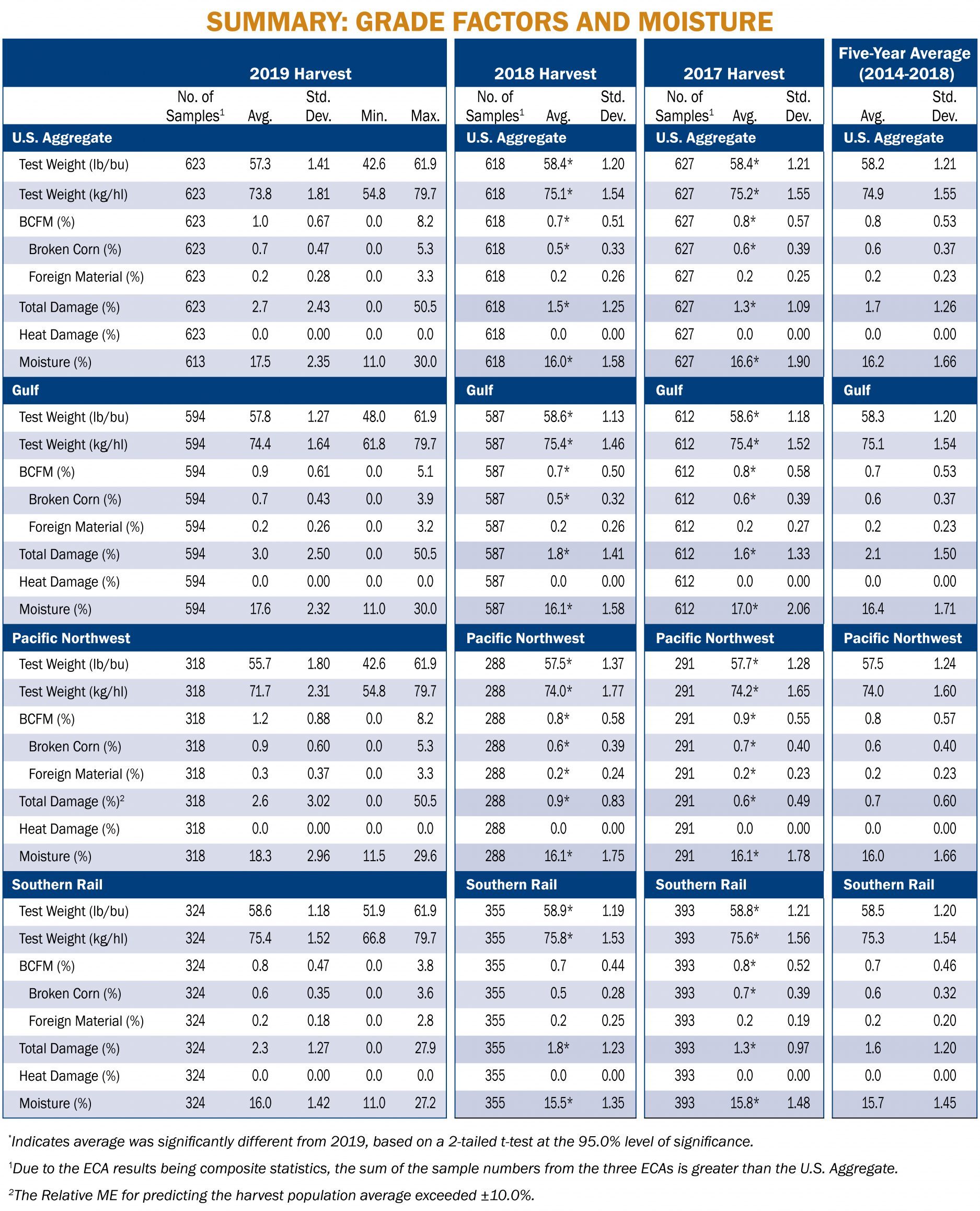Moisture
Moisture content is reported on official grade certificates, and maximum moisture content is usually specified in the contract. However, moisture is not a grade factor; therefore, it does not determine which numerical grade will be assigned to the sample. Moisture content is important because it affects the amount of dry matter being sold, is an indicator of the need for drying and has implications for storability. It also affects test weight. In general, if corn is dried gently, test weight may increase 0.25 to 0.33 lb/bu for a one percentage point reduction in moisture. Although other factors such as kernel size, shape, fine material, damage and rapidity of drying may act to reduce the potential increase in test weight1. The higher moisture content at harvest increases the chance of kernel damage during harvesting and drying. Moisture content and the amount of drying required will also affect stress cracks and breakage. Extremely wet grain may be a precursor to high mold damage later in storage or transport. While the weather during the growing season affects yield, grain composition and kernel development, grain harvest moisture is influenced largely by crop maturation, the timing of harvest and harvest weather conditions. General moisture storage guidelines suggest that 14.0% is the maximum moisture content for storage up to six to twelve months for quality, clean corn in aerated storage under typical U.S. Corn Belt conditions, and 13.0% or lower moisture content for storage of more than one year.2
Results

- The average U.S. Aggregate moisture content recorded at the elevator in 2019 was 17.5%, which was higher than in 2018 (16.0%), 2017 (16.6%) and the 5YA (16.2%). Over the last nine years, average U.S. Aggregate moisture ranged from a low of 15.3% in the 2012 drought year to a high of 17.5% in 2019.
- U.S. Aggregate moisture standard deviation in 2019 (2.35%) was much higher than in 2018 (1.58%), 2017 (1.90%) and the 5YA (1.66%).
- The range in moisture content values in 2019 (11.0 to 30.0%) was higher than 2018 (10.1 to 25.0%) and 2017 (9.0 to 24.4%).
- There were more high-moisture samples in the 2019 samples than in 2018 and 2017, with 45.7% of the samples containing more than 17.0% moisture, compared to 24.7% in 2018 and 36.2% in 2017. There were more samples in the 2019 crop with moisture levels above 21% (18.4%) than in 2018 (1.6%) and 2017 (6.2%). This distribution indicates that the 2019 crop required much more drying than in 2018 or 2017. In the 2019 crop, 12.5% of the samples contained 14.0% or less moisture, compared to 13.6% in 2018 and 12.8% in the 2017 samples. Moisture content values of 14.0% and below are generally considered a safe level for longer-term storage and transport.
- The 2019 moisture values were distributed with 27.2% of the samples containing 15.0% or less moisture. The base moisture used by elevators for discounts is generally 15.0%. This moisture content is considered safe for storage for only a short period during low wintertime temperatures.
- The average moisture contents for corn from the Gulf, Pacific Northwest and Southern Rail ECAs were 17.6, 18.3 and 16.0%, respectively.
- Average moisture levels for the Southern Rail ECA were lowest among all ECAs for 2019, 2018, 2017 and the 5YA. Samples from the Southern Rail ECA usually contain lower moisture content due to generally favorable weather conditions for grain drying in the field.
- Moisture contents in the 2019 samples were higher than in 2018 and the 5YA; thus, care should be taken to monitor and maintain moisture levels sufficiently low to prevent possible mold growth, which can reduce storage life.


